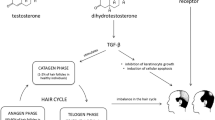Abstract
In this study, we aimed to investigate the role of three trace elements, namely, zinc, copper, and lead, in tinnitus by analyzing the serum level of copper and lead and both the serum and tissue level of zinc. Eighty patients, who applied to outpatient otolaryngology clinic with the complaints of having tinnitus, and 28 healthy volunteers were included. High-frequency audiometry was performed, and participants who had hearing loss according to the pure tone average were excluded; tinnitus frequency and loudness were determined and tinnitus reaction questionnaire scores were obtained from the patients. Of all the participants, serum zinc, copper, and lead values were measured; moreover, zinc levels were examined in hair samples. The levels of trace elements were compared between tinnitus and control groups. The level of copper was found to be significantly lower in the tinnitus group (p = 0.02), but there was no significant difference between the groups in terms of the levels of zinc, neither in serum nor in hair, and lead in serum (p > 0.05). The lack of trace elements, especially that of “zinc,” have been doubted for the etiopathogenesis of tinnitus in the literature; however, we only found copper levels to be low in patients having tinnitus.





Similar content being viewed by others
References
Von Wedel H, Von Wedel UC, Zorowka P (1991) Tinnitus diagnosis and therapy in the aged. Acta Otolarygol Suppl 476:195–201
Moller AR (2010) Epidemiology of tinnitus in adults. In: Moller AR, Langguth B, DeRidder D, Kleinjung T (eds) Textbook of tinnitus: diagnosis and treatment, 1st edn. Springer, New York, pp. 29–38
Heller AJ (2003) Classification and epidemiology of tinnitus. Otolaryngol Clin N Am 36:239–248
Yetiser S, Tosun F, Satar B, Arslanhan M, Akcam T, Ozkaptan Y (2002) The role of zinc in management of tinnitus. Auris Nasus Larynx 29:329–333
Frederickson CJ, Moncrieff DW (1994) Zinc-containing neurons. Biol Signals 3:127–139
Combs DK, Goodrich RD, Meiske JC (1982) Mineral concentrations in hair as indicators of mineral status: a review. J Anim Sci 54:391–398
Akcıl E, Tug T, Doseyen Z (2000) Antioxidant enzyme activities and trace element concentrations in ischemia-reperfusion. Biol Trace Elem Res 76:13–17
Betlejewski S, Ossowski R (2009) Deafness and mentality in Francisco Goya’s paintings. Otolaryngol Pol 63:186–190
Caner Mercan G, Ozturk K, Kirazlı T, Bilgen C, Kılıc MA, Ogut F (2013) Methodology of clinical trials on diagnosis and treatment of subjective tinnitus: proposal for a national protocol. Ege Journal of Medicine 52:125–130
Berkiten G, Kumral TL, Guven Y, Salturk Z, Uyar Y, Atar Y (2015) Effects of serum zinc level on tinnitus. Am J Otolaryngol 36:230–234
Paaske BP, Pederse CB, Kjems G, Sam IL (1991) Zinc in the management of tinnitus, placebo- controlled trial. Ann Otol Rhinol Laryngol 100:647–649
Jun HJ, Ok S, Tyler R, Hwang SY, Chae S (2015) Is hypozincemia related to tinnitus?: a population study using data from the Korea National Health and nutrition examination survey. Clinical and experimental otorhinolaryngology 8:335–338
Ochi K, Kinoshita H, Kenmochi M, Nishino H, Ohashi T (2003) Zinc deficiency and tinnitus. Auris, nasus, larynx 30 Suppl: S25–8.
Ochi K, Ohashi T, Kinoshita H, Akagi M, Kikuchi H, Mitsui M, et al. (1997) The serum zinc level in patients with tinnitus and the effect of zinc treatment. Nippon Jibiinkoka Gakkai Kaiho 100:915–919
Coelho C, Witt SA, Ji H, Hansen MR, Gantz B, Tyler R (2013) Zinc to treat tinnitus in the elderly: a randomized placebo controlled crossover trial. Otol Neurotol 34:1146–1154
Arda HN, Tuncel U, Akdogan O, Ozluoglu LN (2003) The role of zinc in the treatment of tinnitus. Otol Neurotol 24:86–89
Gersdorff M, Robillard T, Stein F, Declaye X, Vanderbem S (1987) A clinical correlation between hypozincemia and tinnitus. Arch Otorhinolaryngol 244:190–193
Hardin MF, Barker M, Neis P (2005) Rare auditory-electrophysiology finding in Wilson’s disease. J Ark Med Soc 101:281–283
Kapaki E, Zournas C, Kanias G, Zambelis T, Kakami A, Papageorgiou C (1997) Essential trace element alterations in amyotrophic lateral sclerosis. J Neurol Sci 147:171–175
Rarey KE, Yao X (1996) Localization of Cu/Zn-SOD and Mn-SOD in the rat cochlea. Acta Otolaryngol 116:833–835
Acknowledgments
This study was supported by Kayseri Training and Research Hospital Research Fund. The authors thank audiologist Tansel Coşkunsu for collecting and interpreting the audiometric data of the patients from the sub-Department of Audiology, Kayseri Training and Research Hospital, Kayseri, Turkey.
Author information
Authors and Affiliations
Corresponding author
Ethics declarations
Conflict of Interest
The authors declare that they have no conflicts of interest.
Additional information
All authors have read the manuscript and have agreed to submit it in its current form for consideration for publication in the Biological Trace Element Research Journal.
Rights and permissions
About this article
Cite this article
Yaşar, M., Şahin, M.İ., Karakükçü, Ç. et al. The Role of Trace Elements in Tinnitus. Biol Trace Elem Res 176, 65–72 (2017). https://doi.org/10.1007/s12011-016-0815-z
Received:
Accepted:
Published:
Issue Date:
DOI: https://doi.org/10.1007/s12011-016-0815-z




